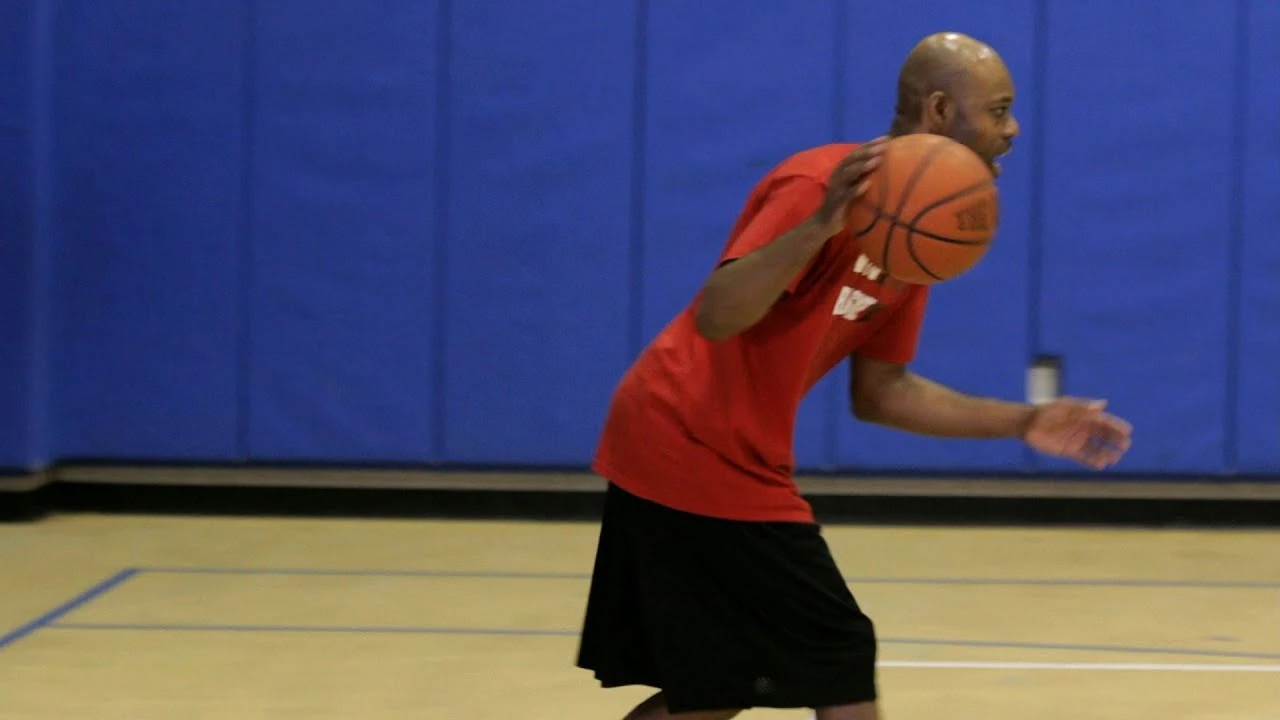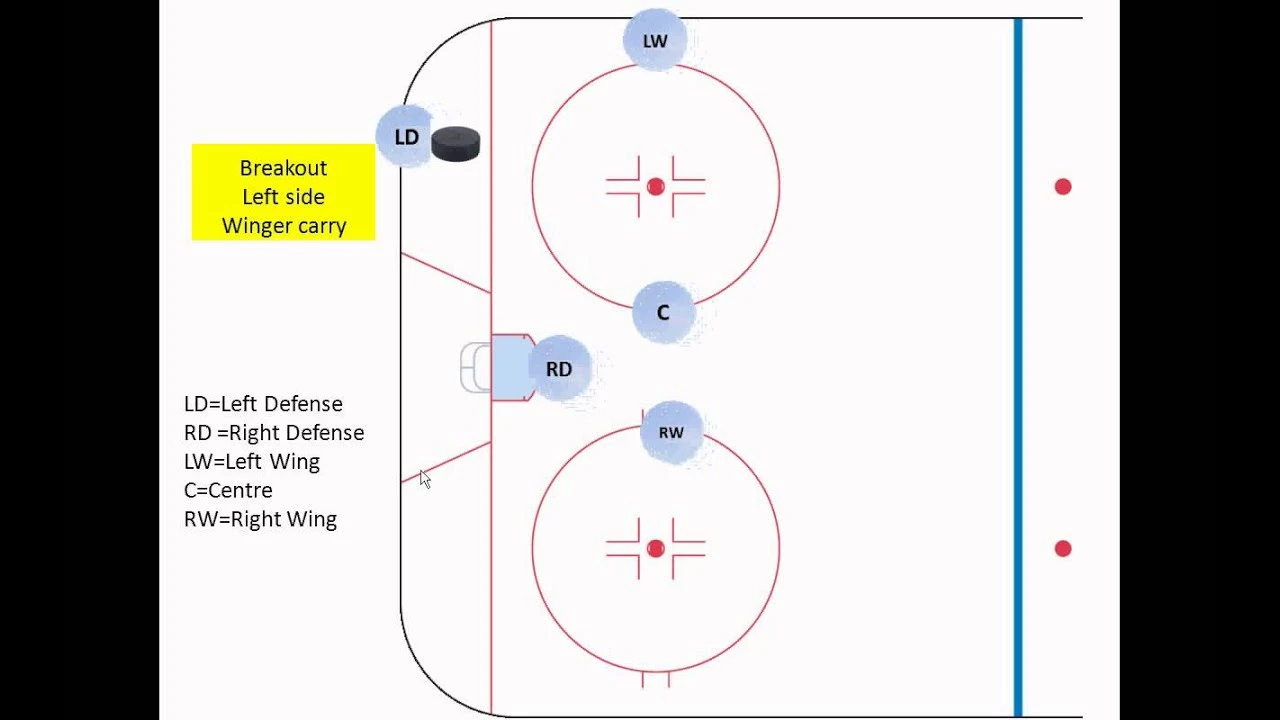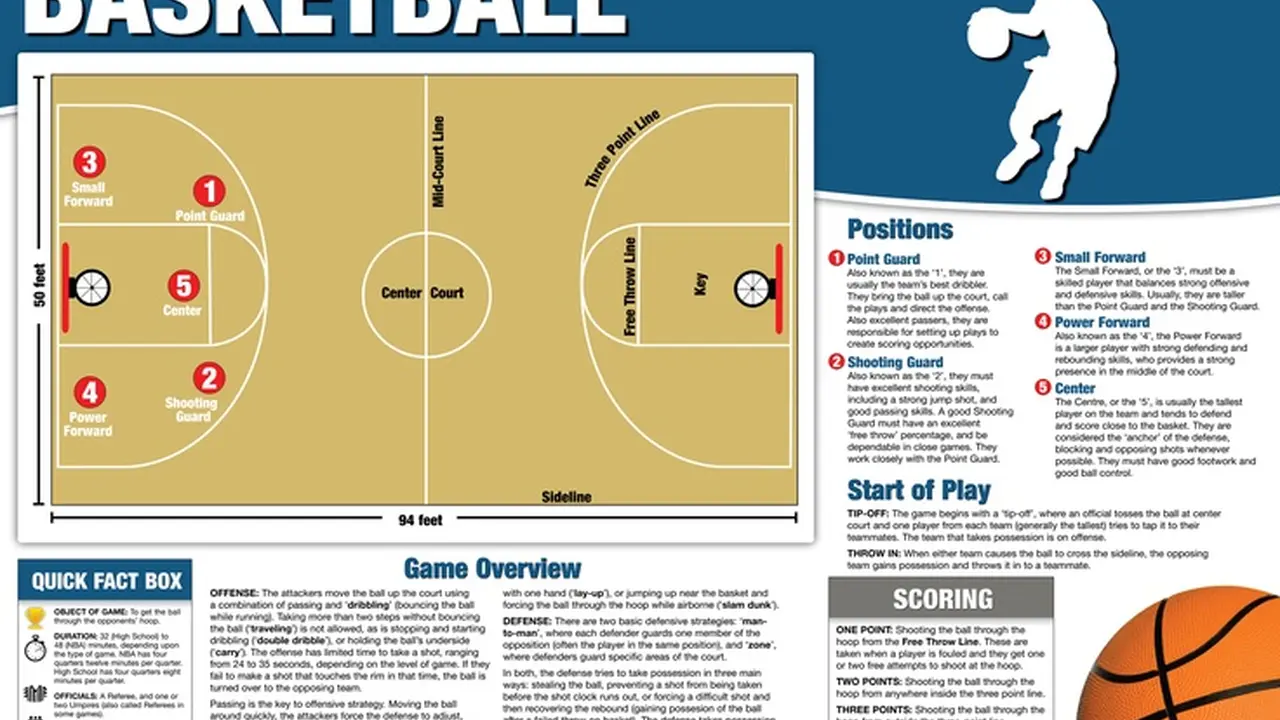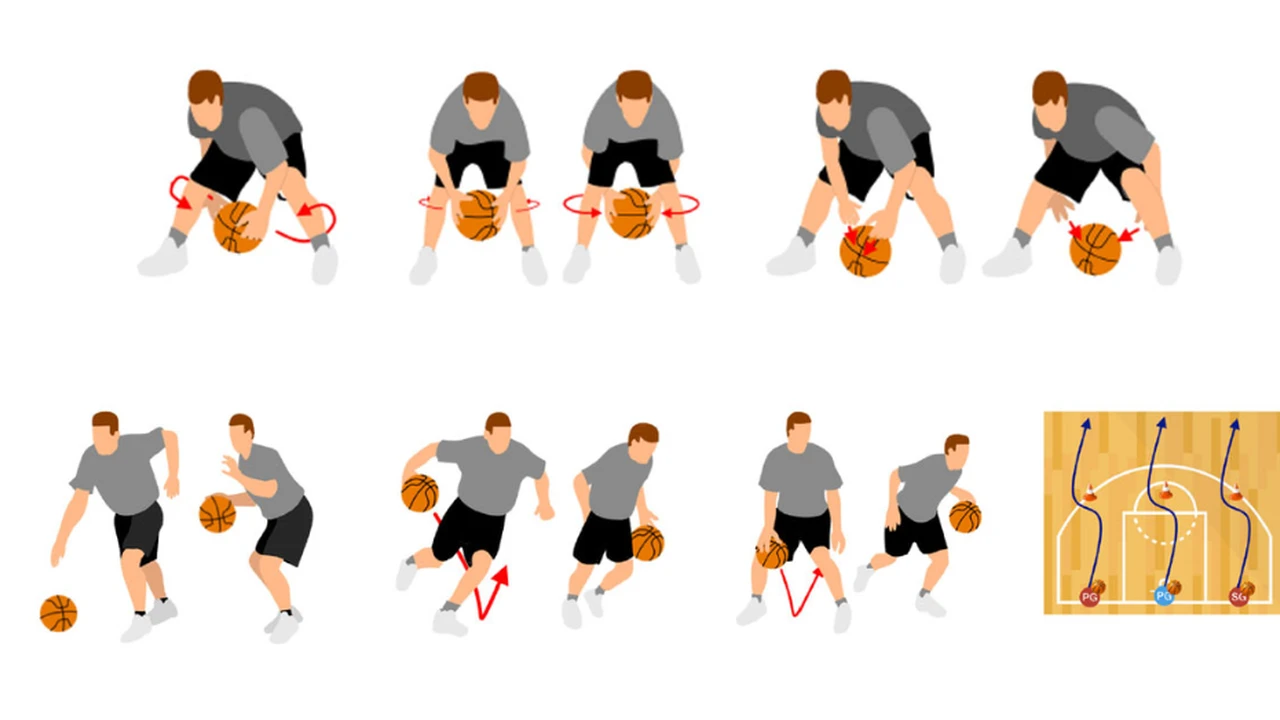3-Point Shooting_ Extending Your Range
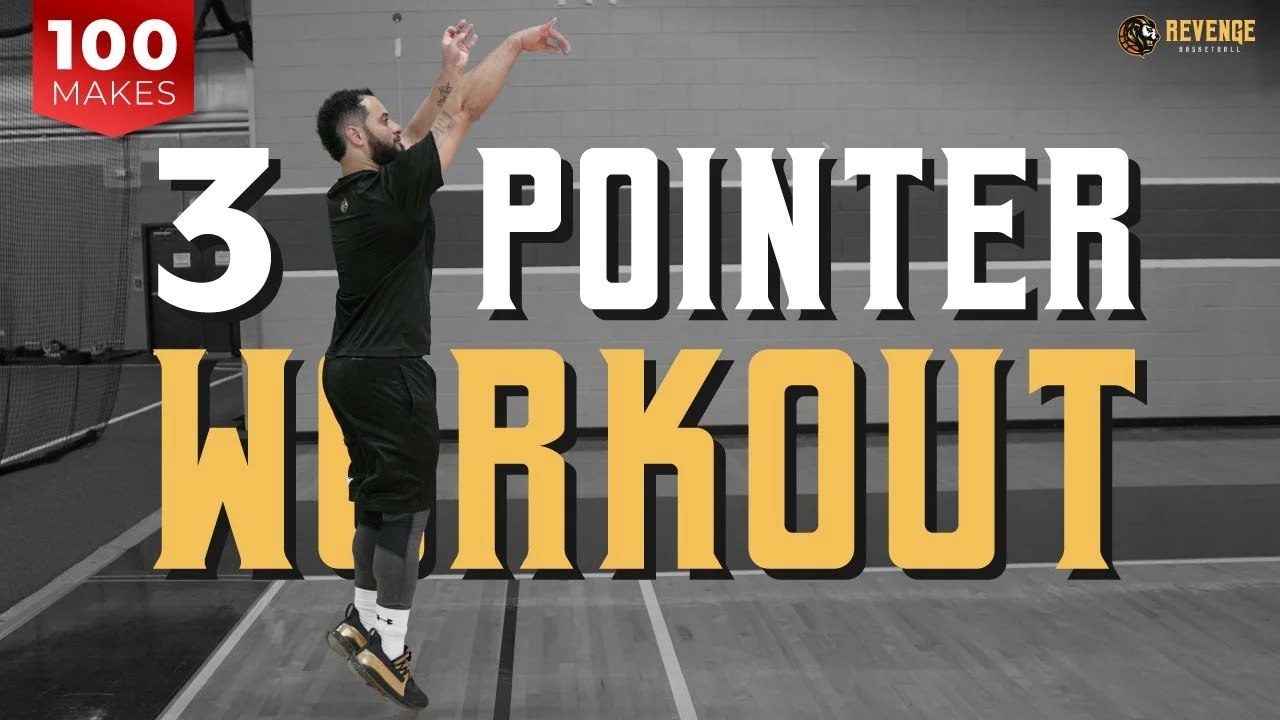
Understanding the Fundamentals of Shooting Technique
Okay, let's dive deep into the fascinating world of shooting, specifically the 3-point shot. It's not just about tossing the ball up and hoping for the best. It's a science, an art, and a whole lot of practice. We're talking about dissecting every aspect of your form, from your stance to your release, to unlock your true shooting potential. Forget those lucky shots; we're aiming for consistent, repeatable excellence.
First, let's talk about your base. Think of your stance as the foundation of a skyscraper. If it's shaky, everything else crumbles. Your feet should be shoulder-width apart, slightly staggered with your dominant foot slightly ahead. This gives you balance and allows you to generate power from the ground up. Your knees should be slightly bent, acting like springs ready to unleash energy. The key is to be comfortable and balanced, ready to explode upwards.
Next up is your grip. This is where things can get personal. Some players prefer a wide grip, others a narrower one. Experiment to find what feels most natural and comfortable for you. The ball should rest comfortably in your fingertips, not your palm. Imagine holding a bird – you want to hold it securely but not crush it. Your shooting hand should be directly behind the ball, with your guide hand providing support on the side. Remember, your guide hand is just that – a guide. It shouldn't interfere with your shooting motion.
Now, let's talk about your elbow. This is crucial. Keep your elbow tucked in, pointing towards the basket. A common mistake is to let your elbow flare out, which can lead to inconsistent shots. Think of your arm as a lever, and your elbow as the fulcrum. A straight lever is more efficient than a bent one. Keeping your elbow tucked in allows you to generate more power and accuracy.
Finally, the release. This is the culmination of all your hard work. As you rise up, extend your arm fully, flicking your wrist at the top of your motion. Your follow-through is just as important as the release itself. Hold your follow-through until the ball reaches the basket. This helps you maintain accuracy and consistency. Imagine you're reaching into a cookie jar on a high shelf – that's the motion you're aiming for.
Remember, consistency is key. The more you practice these fundamentals, the more natural they will become. Don't be afraid to experiment and find what works best for you. But always stick to the core principles of good shooting form.
Optimizing Your Shooting Drills for Maximum Improvement
Alright, you've got the fundamentals down. Now it's time to put them to the test with some effective shooting drills. But not just any drills. We're talking about drills designed to specifically improve your 3-point shooting accuracy and consistency. Forget just mindlessly chucking up shots; we're going to be smart about this.
First, let's start with the classic spot shooting drill. Choose five spots around the 3-point line, and shoot five shots from each spot. Focus on your form and release, and track your makes and misses. This drill helps you develop consistency and identify your strengths and weaknesses. Are you consistently missing short from one spot? Maybe you need to adjust your leg drive. Are you consistently missing wide from another spot? Maybe you need to adjust your elbow position.
Next up is the catch-and-shoot drill. This drill simulates game-like situations, where you're catching a pass and immediately shooting the ball. Have a partner pass you the ball from different angles and distances. Focus on quickly getting your feet set and releasing the shot. This drill helps you improve your reaction time and your ability to shoot under pressure. Imagine you're coming off a screen and need to quickly get your shot off before the defender closes out.
Then there's the dribble pull-up drill. This drill simulates situations where you're dribbling the ball and then pulling up for a 3-point shot. Practice dribbling towards the basket, stopping on a dime, and rising up for a shot. This drill helps you improve your ball-handling skills and your ability to create your own shot. Imagine you're driving to the basket and the defense cuts you off. You need to be able to quickly pull up and shoot the ball before they recover.
Another great drill is the free-throw-to-3-point drill. Start by shooting a free throw. If you make it, immediately sprint to the 3-point line and shoot a 3-pointer. If you miss the free throw, you have to do push-ups before sprinting to the 3-point line. This drill helps you improve your conditioning and your mental toughness. It also helps you develop the ability to shoot under fatigue.
Finally, don't forget about game-simulation drills. Set up a game-like scenario and play against a defender. Focus on using your shooting skills in a game situation. This drill helps you improve your decision-making skills and your ability to score in a game. Imagine you're down by one point with seconds left on the clock. You need to be able to stay calm and make the shot.
Remember to track your progress and adjust your drills accordingly. If you're consistently making a certain shot, challenge yourself by moving further away from the basket or adding a defender. If you're consistently missing a certain shot, focus on improving your form and release. The key is to be constantly challenging yourself and pushing your limits.
The Role of Strength and Conditioning in Shooting Performance
You might think that shooting is all about technique and practice. And while that's certainly important, don't underestimate the role of strength and conditioning. A strong and conditioned body is essential for generating power, maintaining consistency, and preventing injuries. We're not talking about bulking up like a bodybuilder; we're talking about developing functional strength and endurance that will translate directly to your shooting performance.
First, let's talk about leg strength. Your legs are the foundation of your shot. They provide the power and stability you need to generate force and maintain balance. Squats, lunges, and calf raises are all great exercises for building leg strength. Focus on using proper form and gradually increasing the weight or resistance. Imagine your legs are springs that are coiled and ready to explode upwards.
Next up is core strength. Your core is the center of your body. It helps you stabilize your torso and transfer power from your legs to your arms. Planks, crunches, and Russian twists are all great exercises for building core strength. Focus on engaging your core muscles throughout the exercise. Imagine your core is a bridge that connects your lower and upper body.
Then there's upper body strength. While your legs provide the power, your upper body controls the accuracy and release of your shot. Push-ups, pull-ups, and dumbbell rows are all great exercises for building upper body strength. Focus on using proper form and gradually increasing the weight or resistance. Imagine your arms are levers that are precisely controlling the ball's trajectory.
Don't forget about flexibility. Flexibility is essential for preventing injuries and improving your range of motion. Stretching, yoga, and Pilates are all great activities for improving flexibility. Focus on stretching all the major muscle groups, especially your legs, back, and shoulders. Imagine your body is a rubber band that can stretch and contract without breaking.
Finally, don't neglect your conditioning. Shooting is a physically demanding activity, especially in a game situation. Running, sprinting, and interval training are all great activities for improving your conditioning. Focus on gradually increasing the intensity and duration of your workouts. Imagine your body is an engine that can run at full speed for an extended period of time.
Remember to consult with a qualified strength and conditioning coach to develop a personalized training program that meets your specific needs and goals. They can help you assess your current fitness level, identify your weaknesses, and design a program that will help you maximize your shooting performance.
Analyzing Professional Shooting Techniques and Strategies
One of the best ways to improve your own shooting is to study the techniques and strategies of the pros. Watch videos of your favorite players and pay attention to their form, their footwork, and their decision-making. What makes them so successful? What can you learn from them? We're not talking about blindly copying their style; we're talking about analyzing their techniques and adapting them to your own game.
Let's start with Stephen Curry. He's widely regarded as one of the greatest shooters of all time. What makes him so special? His incredibly quick release, his effortless range, and his unwavering confidence. Notice how he keeps his elbow tucked in, how he flicks his wrist at the top of his motion, and how he holds his follow-through. He also has incredible footwork, allowing him to quickly get his feet set and release the shot even when he's under pressure. And his confidence is contagious. He believes he can make every shot, and that belief translates into success.
Next up is Klay Thompson. He's another deadly shooter with a smooth and efficient release. Notice how he keeps his body balanced, how he uses his legs to generate power, and how he follows through completely. He also has a great understanding of spacing and timing. He knows how to move without the ball to get open for a shot, and he knows when to pass and when to shoot. He's a master of the catch-and-shoot.
Then there's Reggie Miller. He was known for his clutch shooting and his ability to perform under pressure. Notice how he used his body to create space, how he used his quickness to get open, and how he never gave up. He was a master of the pump fake and the step-back jumper. He also had incredible mental toughness. He never let the pressure get to him, and he always believed he could make the shot.
And finally, let's talk about Ray Allen. He was one of the most dedicated and disciplined shooters of all time. Notice how he practiced his form religiously, how he paid attention to every detail, and how he never stopped working to improve his game. He was a master of the corner three, and he was always willing to do whatever it took to win. He was a true professional.
By studying these players, you can learn valuable lessons about shooting technique, strategy, and mental toughness. But remember, you can't just copy their style. You need to adapt their techniques to your own game and find what works best for you. The key is to be a student of the game and to never stop learning.
Overcoming Mental Barriers to Consistent Shooting
Shooting is not just a physical skill; it's also a mental one. Your mindset can have a huge impact on your shooting performance. If you're feeling nervous, anxious, or self-doubtful, it's going to be difficult to shoot well. You need to develop mental toughness and learn how to overcome the mental barriers that can hold you back. We're talking about building confidence, managing pressure, and staying positive even when you're struggling.
First, let's talk about confidence. Confidence is essential for shooting success. You need to believe in yourself and your ability to make shots. How do you build confidence? By practicing hard, by focusing on your strengths, and by celebrating your successes. Don't dwell on your mistakes; learn from them and move on. Visualize yourself making shots and imagine the feeling of success. The more confident you are, the better you'll shoot.
Next up is managing pressure. Pressure can be a killer for shooters. The fear of failure can lead to anxiety and self-doubt, which can negatively impact your performance. How do you manage pressure? By focusing on the process, not the outcome. Don't worry about whether you're going to make the shot; focus on your form, your release, and your follow-through. Breathe deeply and stay relaxed. Remember that everyone misses shots, even the pros. The key is to stay calm and focused.
Then there's staying positive. It's easy to get discouraged when you're struggling. You might start to doubt yourself, question your abilities, and lose your motivation. How do you stay positive? By focusing on the positive aspects of your game. Remember your strengths, celebrate your successes, and focus on your goals. Surround yourself with positive people who will support you and encourage you. And never give up on yourself.
Another helpful technique is to use positive self-talk. Instead of saying negative things to yourself like "I can't make this shot," say positive things like "I can make this shot." Replace negative thoughts with positive ones. This can help you boost your confidence and improve your performance.
Finally, don't be afraid to seek help from a sports psychologist. A sports psychologist can help you develop mental skills such as visualization, relaxation, and positive self-talk. They can also help you identify and overcome the mental barriers that are holding you back. Remember that mental training is just as important as physical training.
Product Recommendations for Enhanced Shooting Performance
Alright, let's talk about some gear that can actually help you improve your shooting. We're not talking about magic wands or instant fixes, but rather tools and equipment that can support your training and help you develop better habits. From shooting sleeves to training aids, there are a variety of products out there that can give you an edge. But be warned: no product can replace hard work and dedication. These are simply tools to help you on your journey.
Shooting Sleeves: These are popular for a reason. They provide compression to your shooting arm, which can improve blood flow and muscle recovery. Some players also believe they help with consistency by providing a consistent feel on their arm. A popular brand is Nike Pro Combat Shooting Sleeve. It typically costs around $20 - $30. Users report improved arm warmth and a feeling of support. A competing product is the Adidas Arm Sleeve, often priced similarly. The Adidas sleeve tends to be slightly more breathable, according to reviews. Consider your climate and personal preference when choosing.
Shooting Aids: There are various shooting aids designed to improve your form and release. One popular option is the SKLZ D-Man Basketball Defender, a portable defender that helps you practice shooting over a defender. It retails for around $70 - $90. It's used to simulate game-like pressure. Another option is the Dr. Dish Home Shooting Machine, a more expensive but highly effective shooting machine that rebounds your shots and tracks your progress. This can cost upwards of $5,000. The Dr. Dish offers detailed analytics on your shooting performance, making it a powerful training tool. A cheaper alternative is a simple rebounding net like the Spalding Rebounder which costs around $50 and helps with solo practice.
Basketballs: The type of basketball you use can also impact your shooting. A high-quality basketball with good grip and consistent bounce is essential. The Wilson Evolution Game Basketball is a popular choice among players of all levels. It typically costs around $60 - $80. It is known for its soft feel and excellent grip. Another solid option is the Spalding NBA Zi/O Excel Basketball, which is slightly more durable and weather-resistant, making it suitable for outdoor use. It is typically priced around $30 - $50. For indoor practice, the Wilson Evolution is generally preferred, while the Spalding Zi/O is a good choice for outdoor courts.
Shooting Shoes: Proper footwear is crucial for balance and stability when shooting. Look for shoes that provide good ankle support and cushioning. The Nike LeBron series and Adidas Dame series are popular choices among basketball players. These shoes typically cost around $150 - $200. The LeBron series is known for its cushioning and support, while the Dame series is known for its lightweight design and responsiveness. Consider your playing style and foot type when choosing basketball shoes. A cheaper, but still reliable option is the Nike Air Precision IV which can be found for around $70-$90.
Basketball Hoops: If you're serious about improving your shooting, having your own basketball hoop is a must. The Lifetime 71524 Height Adjustable Portable Basketball System is a popular choice for home use. It costs around $200 - $300. It's adjustable and portable, making it a versatile option. A more premium option is the Goalrilla GS54, an in-ground basketball system that provides a more stable and durable playing experience. This can cost upwards of $1,000. Consider your budget and available space when choosing a basketball hoop.
Remember to do your research and read reviews before purchasing any product. And don't expect these products to magically transform you into a great shooter. They are simply tools to help you on your journey. The most important thing is to practice hard and consistently.
Practical Applications of Advanced Shooting Techniques in Game Scenarios
Knowing how to shoot is one thing, but knowing when and how to use your shooting skills in a game is another. You need to be able to apply your advanced shooting techniques in real-time, under pressure, and against a defender. We're talking about understanding spacing, timing, and decision-making. We're talking about becoming a smart and effective shooter, not just a skilled one.
First, let's talk about spacing. Spacing is crucial for creating open shots. You need to know where to position yourself on the court to maximize your chances of getting a good look at the basket. Stay wide to stretch the defense, move without the ball to create space, and fill the open spots on the floor. Don't stand too close to your teammates, and don't clog the lane. The more space you create, the easier it will be to get open for a shot.
Next up is timing. Timing is everything in basketball. You need to know when to cut, when to screen, and when to shoot. Don't rush your shots, and don't hesitate when you're open. Be patient and wait for the right opportunity. The better your timing, the more effective you'll be as a shooter.
Then there's decision-making. You need to be able to make quick and accurate decisions in real-time. Should you shoot the ball? Should you pass it? Should you drive to the basket? The answer depends on the situation. Read the defense, understand your options, and make the best decision for your team. The better your decision-making skills, the more valuable you'll be as a player.
Let's look at some specific game scenarios. Imagine you're coming off a screen and you're open for a 3-pointer. Should you shoot it? It depends. If you're confident in your shot and you have a clear look at the basket, then yes, shoot it. But if the defender is closing out quickly or you're not feeling comfortable, then maybe you should pass it to a teammate who has a better opportunity.
Another scenario: you're driving to the basket and the defense cuts you off. Should you force the shot? No. Instead, pull up for a jump shot or pass the ball to an open teammate. Don't try to force things; let the game come to you.
Remember to practice these game scenarios in your training sessions. Simulate game-like situations and work on your spacing, timing, and decision-making. The more you practice, the more comfortable you'll be in game situations.
Common Mistakes to Avoid When Developing Shooting Skills
Developing your shooting skills is a journey, and like any journey, there are pitfalls to avoid. Making these common mistakes can hinder your progress and even lead to bad habits. Let's identify some of these common errors and learn how to steer clear of them. We're talking about everything from improper form to poor practice habits.
Improper Form: This is the biggest mistake of all. If your form is flawed, you'll never be a consistent shooter. Make sure you have a solid foundation, a proper grip, a consistent release, and a full follow-through. Don't try to copy someone else's form; find what works best for you and stick with it.
Lack of Practice: You can't expect to become a great shooter without putting in the time and effort. Practice consistently, and focus on quality over quantity. Don't just mindlessly chuck up shots; focus on your form and your release.
Poor Practice Habits: Practicing the wrong things can be just as bad as not practicing at all. Make sure you're practicing game-like shots and situations. Don't just practice shots that are easy for you; challenge yourself and work on your weaknesses.
Ignoring Feedback: Don't be afraid to ask for feedback from coaches, teammates, or even friends. They might see things that you don't. Be open to criticism and use it to improve your game.
Lack of Patience: Developing your shooting skills takes time and effort. Don't get discouraged if you don't see results immediately. Be patient, stay focused, and keep working hard. Eventually, you'll see the progress you're looking for.
Overthinking: Sometimes, the best thing you can do is just relax and let your natural talent take over. Don't overthink your shots; trust your instincts and let it fly.
Ignoring the Mental Game: As we discussed earlier, the mental game is just as important as the physical game. Work on your confidence, your focus, and your mental toughness. Don't let negative thoughts hold you back.
By avoiding these common mistakes, you'll be well on your way to developing your shooting skills and becoming a more effective player.
:max_bytes(150000):strip_icc()/277019-baked-pork-chops-with-cream-of-mushroom-soup-DDMFS-beauty-4x3-BG-7505-5762b731cf30447d9cbbbbbf387beafa.jpg)



